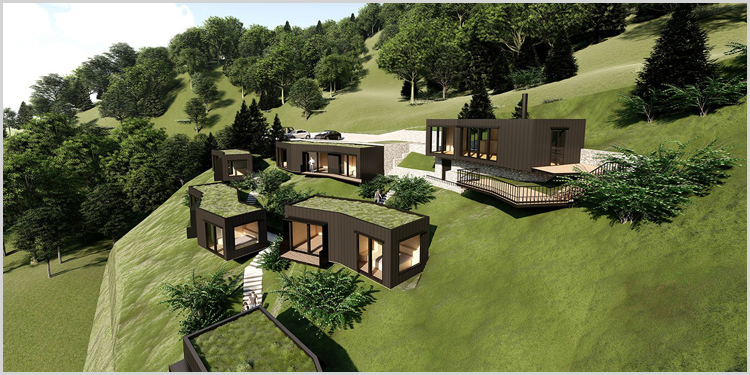- Dr. S. V. Ranade
India is an agro-based country. About 70% population of India stays in villages. The environment of villages is entirely different than cities and urban centers. Villages have low cost houses with use of local materials. The families are generally associated with animal stock like buffalo, goat, hen etc. Hence rural houses have different planning from those in urban area.
The majority of rural area is of middle and low income group and depends on agriculture. The general problems faced by villagers are non availability of adequate water of good quality, absence of proper sewerage system, solid waste problem due to agro waste and shortage of power. Low budget of gram panchayat, lack of technical know how, frequent power shortage are the reasons for under development of villages.
There are eco-friendly economical options for meeting the needs of energy and manure through utilization of agriculture waste for biogas production, vermicomposting of domestic solid waste and harnessing solar energy for water heating and electricity generation. The rainwater harvesting system can help in recharging the groundwater table.
The extensive work has been carried out on design of eco-friendly green building in urban area. The urban environmental problems have been addressed under green city projects. The findings of this research work can’t be applied to rural sector due to inherent difference in requirement. That’s why environmental planning strategies need to be focused to safeguard environmental quality of villages.
The villages can be categorized based on problems and resources available as follows:-
Situated along river bank (water supply and agriculture resources but flood and wastewater disposal problem)
Situated in hilly reason (water shortage, agriculture difficulties but wind, solar energy resources available)
Situated in forest (natural resources are available but energy problem)
Situated in dry area (water shortage is the main problem)
Situated near sea coast (problems of water quality and quantity)
In present study the selected Padmale village, for green village project belongs to first category. The Padmale is situated along the bank of Krishna River. The population of Padmale is approximately 3202. Padmale is 5 km distance away from Sangli city.

Green concept:-
Green concept includes use of Eco-friendly materials, energy conservation and preservation of environmental quality. Green concept is used to reduce adverse impact on environment due to man made sources of pollution.
Aspects of green design:-
1. Sustainability
2. Eco-sensitivity
3. Energy efficiency
4. Climate-responsiveness
5. User-friendliness
6. Cost-effectiveness.
Principles of green concept:-
· Conserve energy, water and other natural resources.
· Preserve our environment.
· Strengthen local economy.
· Promote high quality life of citizens.
Green village:-
A “Green village” can thus defined as a futuristic rural habitation, that is sustainable as a rural ecosystem, making optimum use of resources, and making a sustainability positive impact on our global built and natural environment by a better quality of life, more greenery and quite importantly with maximum efficiency in regards to overall energy use.Necessicity of green village:-
Due to urbanization there is a lot of focus of government on urban areas for solving their environmental problems for sustainability as well as eco- sensitivity. The problems from villages are different than urban sector. The criteria used for solving the problems from urban sector cant be adopt for rural area because of rural problems are different than urban area.
For rural areas, the government has initiated various developmental schemes considering sanitation, employment and health aspects. These schemes are like Nirmal gram scheme, Bharat nirman scheme, Mahatma Gandhi tantamukti scheme, Garibi nirmulan scheme, Mahila bachat gat and Rojgar guaranty scheme. These schemes have created awareness and competition in villages for development. These schemes are implemented for solving particular problems in villages but, these are not helpful for total environmental planning as well as sustainable development.
